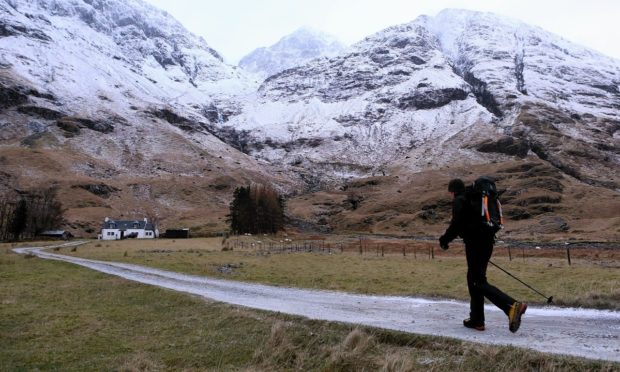Two climbers have been killed after being caught in a suspected avalanche in Glen Coe.
The two men were discovered by a group of other climbers on Stob Coire nam Beith late on Saturday afternoon.
Last night, a rescuer said he believed the pair had likely plunged “several hundred feet” after being swept away by snow at the top of their climb.
Police, coastguards and Glencoe Mountain Rescue Team were called out at about 4.25pm, and found the bodies two-and-a-half hours later.
Andy Nelson, leader of the mountain rescue team, said they were first alerted after two other climbers came across the bodies.
The 16 members of the rescue team took an hour to climb 2,300ft to reach the dead men.
“They were lying on the surface,” Mr Nelson said. “They were well equipped and the hill was coated with snow down to sea level.
“The route they were on is commonly climbed but not one of the most popular in the area. It took a little time for us to reach them because the people who had found them had gone without giving an exact position.
“It is only conjecture but it is possible they got caught up in an avalanche at the top of their climb.
“The guys were roped together still – and there was no climbing hard wear attached if they had fallen off the climb.
“We don’t know how far they had descended but it was probably several hundred feet. It was a typical winter day, snowing with wind on top. The avalanche risk in the area is considerable.
“We just do not know for certain what has happened – or how experienced they were. But they were well equipped and had good equipment.
“Situations like these are always a difficult job for everybody involved.”
The rescuers managed to reach the bodies at 7pm and returned to base at 9pm.
A police spokeswoman said details about the men would be released once their loved ones had been informed.
She said: “Police Scotland were called about concern for two climbers on Stob Coire nam Beith at around 4.25pm on Saturday.
“Police, coastguard and Glencoe Mountain Rescue responded, and sadly we can confirm that the two climbers were found deceased.”
The Sportscotland Avalanche Information Service (SAIS) said the avalanche hazard in six areas – Lochaber, Glen Coe, Creag Meagaidh, Southern Cairngorms , Northern Cairngorms and Torridon – was “considerable”.
Already 18 avalanches have been recorded this season – which started last month.
Last winter, SAIS recorded 237 avalanches compared to 351 the previous year.
However 2013/2014 was noted as one of the snowiest winters in Scotland’s mountains in almost 70 years.
Though fewer in number during last winter, one of the biggest avalanches in years in the Scottish Highlands was recorded in March.
The SAIS reported the debris had slid more than 3280ft in the southern Cairngorms.
The event occurred at Glas Tulaichean and was described as a “full depth avalanche.”
A member of staff at Glenshee Ski Centre alerted the SAIS to the slide, which was filled with mud, rocks and large blocks of snow.
In February, 41-year-old Max Norman, of Ipswich, was killed by an avalanche on the 3,461ft high Liathach in the Torridon Hills.
Rescuers last year slammed two men for visiting the scene of an avalanche while one was dressed in shorts and deck shoes and the other in jeans.
They had stopped to look at the debris on Creag Meagaidh while there was a potential risk of a further snow slide.
